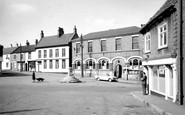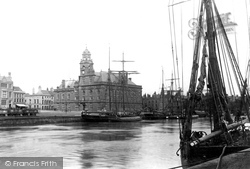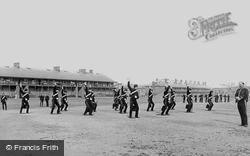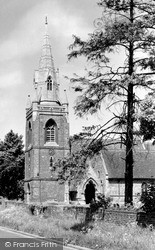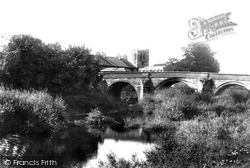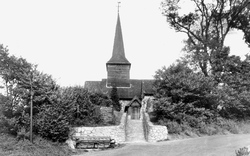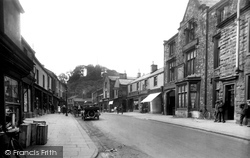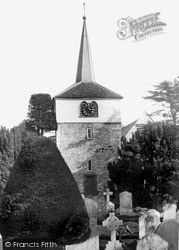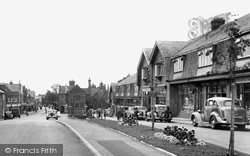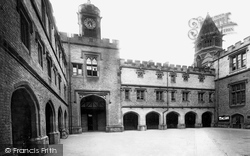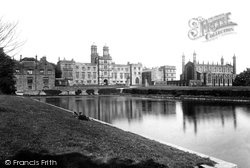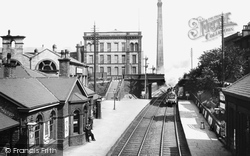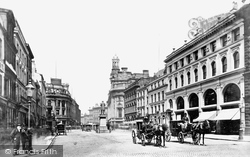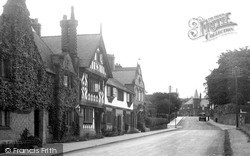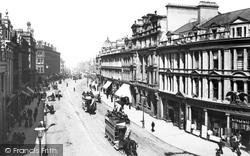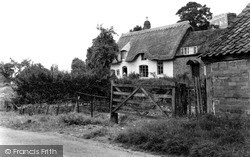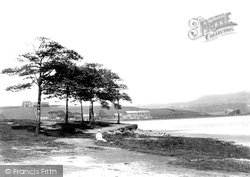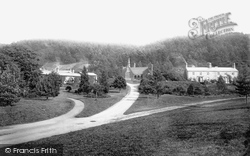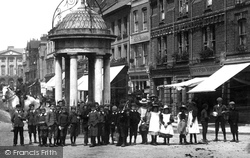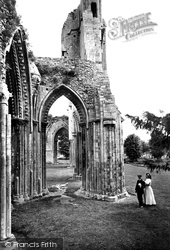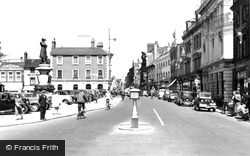Places
Sorry, no places were found that related to your search.
Photos
5 photos found. Showing results 1,001 to 5.
Maps
83 maps found.
Books
Sorry, no books were found that related to your search.
Memories
1,127 memories found. Showing results 501 to 510.
Loyal Order Of Moose
I would very much like to catch up with any members of the L O o M from the Paignton branch of that time, also any members of the Federation of Master Builders Torbay branch of which I was president in the mid 70s, in ...Read more
A memory of Paignton in 1959 by
Madame Imbert
In the mid 70s. I was employed, for a short time, to teach English at Matchwood Park by a French lady called Madame Imbert. I taught twice a week and a friend of mine taught on another two days. I can’t find any reference to ...Read more
A memory of Marchwood Park by
Maesteg 1953 1971
I was born in Ivy House - first on the right in Talbot Terrace. My sister Sally now lives in the same street. I don't remember much before four and half years of age. I lived in that house with my grandfather, Demetrie ...Read more
A memory of Maesteg in 1953 by
Maesteg Market
I can also remember the market in Maesteg, Saturday mornings, Terry and me used to cycle to the market from 30 George Street in Caerau to fetch faggots and peas. Of course, it was easy going there, all down hill so to speak, coming ...Read more
A memory of Caerau in 1954 by
Maesycwmmer And Beyond
Born in 1949, was brought up in Maesycwmmer, lived in Vale View, went to the primary school, and later to Ynysddu Sec. Mod. My parents were Tom and Violet, siblings were Robin [who still lives in the village], Roger ...Read more
A memory of Maesycwmmer by
Manor Court House
The building behind the Market Cross with the arched windows is the Manor Court House, a grade II listed building. It is owned by the Epworth Mechanics' Institute Library, which still operates from the upper floor. The Library was ...Read more
A memory of Epworth by
Mansfield Market
I have some lovely memories of Mansfield market place. My dad, George Fisher, my mum, Margaret, and my lovely Uncle Johnny stood the market for many years. My grandad started the business many years before selling fruit & ...Read more
A memory of Mansfield in 1975 by
Married In Oakhanger Church
In 1991 my husband and I married in Oakhanger Church. The whole of the month of June had been absolutely horrendous with rain and we didn’t hold out much hope for the day of our wedding. That day was the only ...Read more
A memory of Oakhanger by
Marston Jabbett Caravan Park
We moved here from Coventry in about 1956-1957, it was a 22 foot mobile home. We met Jack and Rene Linford who had an adopted daughter, Carol Linford, same age as me. "Uncle " Jack as I called him used to take us to ...Read more
A memory of Nuneaton by
Marton Camp Boading School
I went there in the late 1950s and was there for about 18 months. I can't remember much about the school or my friends, but if you have any photos I would be glad to see them. You can e-mail me at: bobby-green@live.co.uk. Looking forward to seeing them.
A memory of Whitegate in 1959 by
Captions
1,233 captions found. Showing results 1,201 to 1,224.
With the help of the architect Frank Matcham they created a magnificent series of arcades, which are still much admired.
Much of it was carried by wherries, clinker-hulled double-ended barges, that carried a single loose footed gaff sail of about 1200 sq ft.
In 1877 the barracks became part of the much larger Infantry Barracks housing 1350 men. The last horses were retired in 1939, and the Cavalry Barracks were demolished in 1971.
The back arch has strap work and trophies.
The third Herbert tomb in this chapel (to the left) is the elaborate arched tomb of Sir William Herbert's natural son Sir Richard Herbert of Ewyas.
This bridge carried much coaching trade, as it was on the main London to York road.
The timber is about 700 years old, and the bell turret rests on an arched frame of timber.
Notice the stage-coach arch next to the bay windows: the stage coaches to Preston and Blackburn left from here.
Of special interest are the font (early Norman) and the Doom painting above the chancel arch.
The centre of Heswall was originally much closer to the shoreline, probably in the area around Village Road and St Peter's Church, but the advent of Telegraph Road - the A540 - has moved the commercial
Cloisters with studies above run to the south and east of Old Quad, with a tall arch forming the entrance to the School House dining hall at the south-eastern corner.
One thing to be said for Stafford (as far as anywhere can make such a claim in these unsettled times) is that it is a town without a darker side.
The estate is over 2,000 acres, much of which is farmed. The church of St Peter can be seen to the right of the picture.
Titus Salt created a community very much to his own pattern at Saltaire.
The buildings on the right were put up around 1835; the one with rounded window arches was for a long time the booksellers Sherratt & Hughes, and later Waterstone's - it then became WH Smiths while the
This village is referred to as 'Torintone' in the Domesday book, but during the reign of Edward II it, and much of the surrounding land, came into the possession of Roger de Thornton, whose only daughter
Everything seems to have operated on a small scale, and no doubt with much footwork as well as letter-writing. Telegrams could be sent from the massive General Post Office Building.
What is particular about Gloucestershire is that it offers so much variation in landscape. Uplands such as Cleeve Common spread beyond the Cotswold escarpment.
It always started in church, but apparently few people paid much attention to the religious service; they were too busy checking out their neighbours.
Healey Dell has been an attraction of a different type for much longer, probably since Anglo-Saxon times. In 1905 the Edwardian Falinge Park was opened north of Rochdale centre.
Between the road leading up to the mission house and the track forking off to the left of it, lies the village green, very much the heart of the village and a place where generations of village children
The Board brought about swingeing changes in Chelmsford - although much of it was a question of getting the townspeople to alter things they were perfectly happy with.
Thereafter much of the stonework of the abandoned abbey was robbed for re-use elsewhere. In 1907 the site was bought on behalf of the Church of England.
The Jaegar Shop on the extreme left of the picture conjures up memories of tweeds and country pursuits; nowadays the branch is much more fashion orientated, but nevertheless to be found on the High Street
Places (0)
Photos (5)
Memories (1127)
Books (0)
Maps (83)

